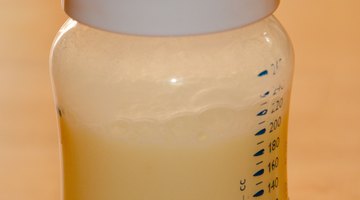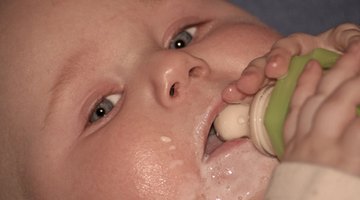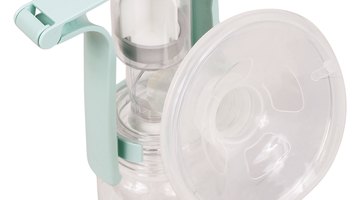How to Know When to Change Breasts While Breastfeeding
Breast-feeding an infant can be difficult. Determining when to switch breasts is a challenge in and of itself. Here are steps you can take to ensure you are switching at appropriate times.
Pay attention to yourself and your baby
Watch your baby to determine when she is ready to change breasts. According to La Leche League International, babies automatically regulate the amount of calories they need by regulating your milk flow. When infants are allowed to nurse until they are ready to pull off on their own, they not only get the watery foremilk that comes out first, but also consume the fatty, nutrient-rich hindmilk that comes through later. Pulling a child off too early can lead to too much foremilk and not enough hindmilk consumption, so let your baby decide when it is time to switch.
While nursing, lay your child on a boppy pillow and squeeze your breast from top to bottom (towards the nipple) to hasten milk flow. Some babies, especially those who frequently use bottles, may become impatient at nursing's slower pace. Squeezing the additional milk down can help satisfy them until they learn to more efficiently drain the breast themselves. If milk no longer emerges during the squeezing process, it may be time to switch breasts.
Pay attention to how your breasts feel. If the breast your baby is nursing from still feels hard and engorged with milk, it probably isn't time to switch yet. However, some infants pull off due to overactive let down. This occurs when the milk ejection reflex—that tingling you feel as you begin to nurse—forces the milk out too fast for your baby. According to La Leche League International, overactive let down can trigger your baby to cough, gag, swallow air or take in too much foremilk, which may cause an upset stomach. Removing your baby during letdown—and catching the ejected milk in a towel or breast pad before your baby latches on—may make it easier for him to drain the breast effectively and comfortably before you switch sides.
If you still have concerns, record how long it takes your baby to feed off each breast during a few days of nursing sessions. Younger babies generally take longer to empty a breast. While a newborn may take 30 to 40 minutes to empty one breast, an older baby may drain one breast in 5 or 10 minutes. Sessions will vary, but acknowledging a general time frame allows you to adjust your expectations accordingly in the absence of other signals to switch sides.











